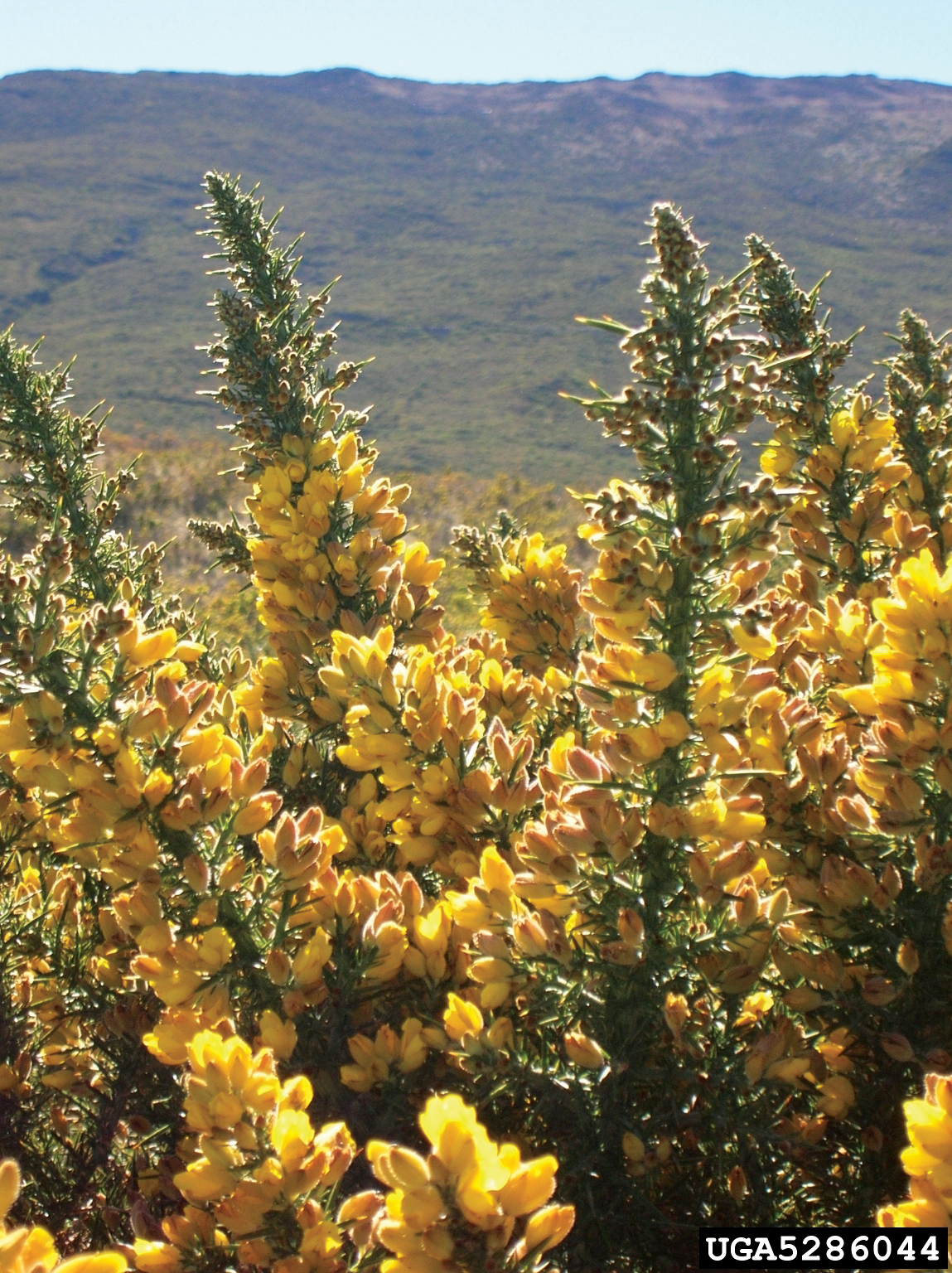Gorse (Ulex europaeus) is an upright woody shrub that is categorized as a noxious weed in California, Hawaii, Oregon and Washington. The seeds and foliage of this perennial are highly flammable. These characteristics alone make gorse a formidable threat to roadside safety and wildfire mitigation programs. That’s why knowing what this evergreen shrub looks like, where to find it and how to control it effectively is crucial for roadside and utility vegetation managers in the West.
WHAT DOES GORSE LOOK LIKE?
Gorse is distinguished by its green leaves, which are shaped like conifer needles, and its bright-yellow pealike flowers that normally bloom in the spring and appear at the end of the plant’s branches. The plant sprouts outward from root crowns and usually grows anywhere from 3 feet to 10 feet tall. As gorse matures, it produces seeds that are both water-resistant and heat-tolerant, which remain viable for up to 30 years.
WHERE IS GORSE FOUND?
Since being introduced on the West Coast in the mid-1800s, dense colonies of gorse have grown in California, Hawaii, Oregon and Washington. This invasive plant tolerates a wide range of light and moisture conditions, which allows it to thrive in a variety of coastal environments. Gorse most often develops in areas with disturbed, infertile soils, such as roadsides and utility rights-of-way. Seeds can be dispersed by wind and animals, but the plant also is capable of resprouting from stumps and severed roots.
HOW TO CONTROL GORSE EFFECTIVELY
Considering its height, resiliency and ability to outcompete native plants, gorse can quickly become an issue along roadsides, where it can impede visibility and compromise the integrity of roadway infrastructure. While this perennial shrub may not pose a risk to grow or fall into electric transmission lines, its highly flammable seeds and foliage can fuel the spread of wildfire if the plant is allowed to develop freely throughout utility rights-of-way and adjacent land. To suppress the development of gorse and reduce incompatible stem densities, the application of herbicide products is a recommended method of control.
Vastlan® herbicide from Corteva Agriscience can be applied to cut surfaces using equipment that is designed to uniformly apply herbicide. For chemical mowing applications, using 2.25 to 4.5 quarts of Vastlan at a minimum spray volume of 5 gallons per acre can enhance control of gorse and other woody plants. Vastlan also can be used for low-volume and high-volume foliar applications in accordance with usage rates detailed by the product label.
Vegetation managers also have the option of adding TerraVue® herbicide from Corteva to tank mixes containing Vastlan to improve control of gorse and a variety of other brush species in states where TerraVue is registered for use. Always check each product label prior to tank-mixing and application to ensure proper rates.
To learn more about the complete portfolio of herbicide products offered by Corteva, click here.
™ ® Trademarks of Corteva Agriscience and its affiliated companies. Under normal field conditions, TerraVue® is nonvolatile. TerraVue has no grazing or haying restrictions for any class of livestock, including lactating dairy cows, horses (including lactating mares) and meat animals prior to slaughter. Label precautions apply to forage treated with TerraVue and to manure and urine from animals that have consumed treated forage. TerraVue and Vastlan® are not registered for sale or use in all states. Contact your state pesticide regulatory agency to determine if a product is registered for sale or use in your state. Consult the label for full details. Always read and follow label directions. © 2022 Corteva.



